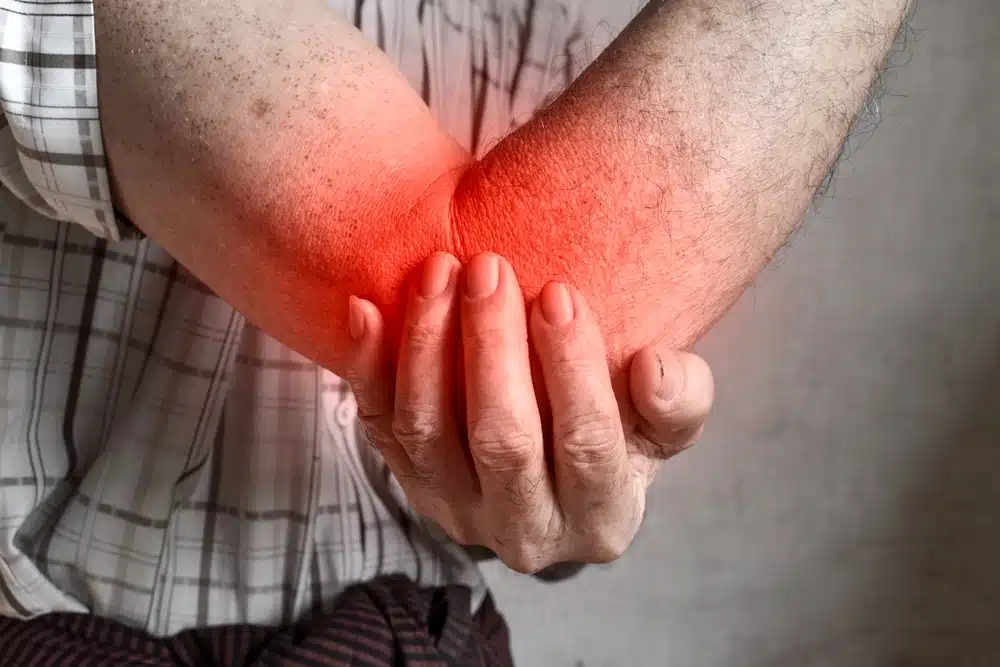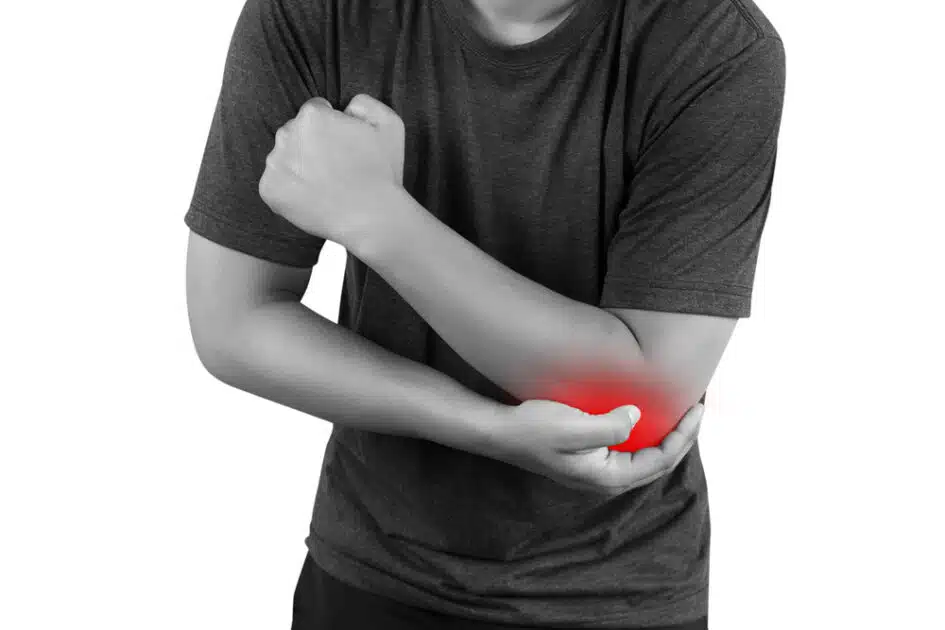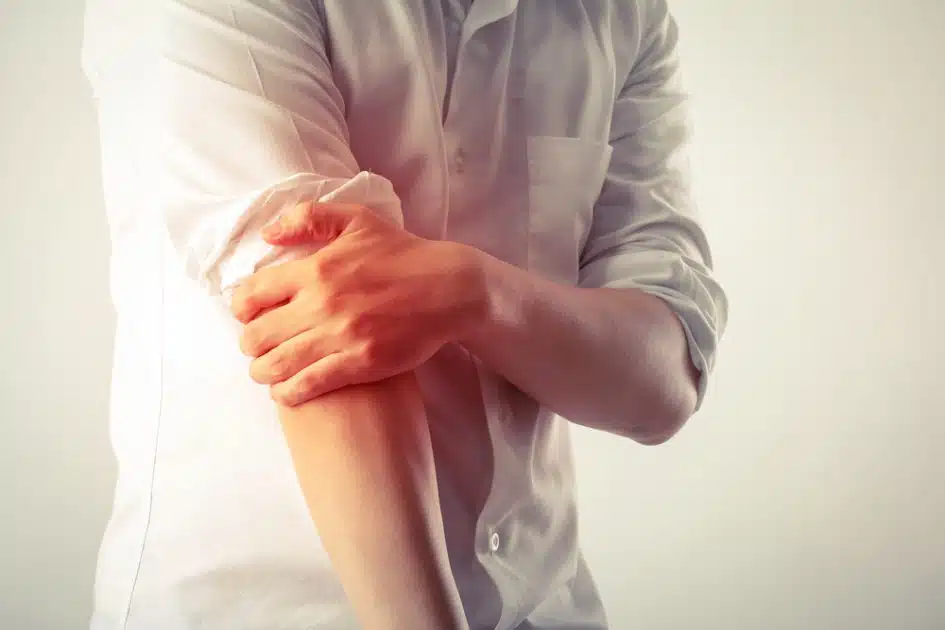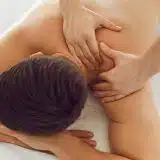Will Massage Help Tennis Elbow?

How Massage Therapy Can Aid Tennis Elbow Recovery
What is Massage 20th Jun, 2023
Massage therapy has emerged as a promising approach for providing relief from tennis elbow, a condition medically known as lateral epicondylitis.

This condition, characterized by pain and tenderness on the outside of the elbow, often results from overuse or strain. Various sources highlight the effectiveness of massage in addressing this discomfort.
How Does Massage Therapy Help?
A massage therapist will check out your pain and tenderness, focusing on your forearm muscles, wrist, hand, and elbow. They’ll ask about when your pain started and what makes it worse. Using this info, they’ll create a personalized massage therapy plan just for you.
Myths about Tennis Elbow
Tennis elbow, contrary to popular belief, has little to do with the activity. In fact, many people diagnosed with this condition may not have swung a racket since they were in school. The illness, known medically as lateral epicondylitis, is frequently misinterpreted.
The pain can be felt on the outside of the elbow and extend down the upper forearm, and it is generally worse while attempting to bend or elevate the arm.
Other symptoms may include difficulties grasping or twisting the forearm, making simple tasks like holding a pen, opening jars, or turning handles difficult. The forearm may also refuse to extend.

Here Are Some Common Causes of Tennis Elbow:
- Overuse of muscles and tendons near the elbow, where the arm bone is anchored
- Unusual hobbies, such as unexpected bursts of DIY or extended typing
- Excessive gripping or wringing—for example, a whole day of hand washing
- Tennis or other racquet sports with incorrect technique
- Forearm muscles that are tense or weak
It’s critical to remember that the bony elbow joint is surrounded by muscles connected by tendons that govern the forearm’s muscles.
Overuse of these muscles may result in tension, leading in inflammation and probable tearing at the external bony area of the elbow.
What Massage Is Best for Neck Pain
What Makes Deep Tissue Massage Magical
Deep tissue massage offers remarkable benefits, primarily by helping in enhancing circulation and providing targeted friction therapy to the tendons around the elbow joint. This method not only relieves discomfort but also aims to break down scar tissue, alleviate pain, release muscle spasms, and boost flexibility.
However, treating conditions like tennis elbow requires patience and caution. It’s tempting to jump back into regular activities once symptoms ease, but the healing tissues are still vulnerable to further injury. A series of massage sessions, combined with a cautious approach, can gradually strengthen the tissues and ensure long-term recovery.
What Is Swedish Massage? How Does Deep Tissue Compare?
Home Remedies for Tennis Elbow
Tennis elbow treatment does not have to entail a trip to the doctor. You may treat this problem at home with several simple and easy-to-implement home remedies. Here are the top recommendations:
- Rest and Recuperation
Limit any activity that might strain your elbow further. - Cool Down with Ice
Just wrap it in a towel and apply it to the elbow for around 15 minutes, a few times a day. - Embrace the Elbow Brace
Wearing an elbow brace or strap can provide support to your elbow and take some strain off the tendons. - Stretch it Out
Gentle stretching exercises can help prevent stiffness and improve flexibility. - Strength Training
Light resistance exercises with a small weight can be very beneficial. - Anti-Inflammatory Diet
Foods rich in omega-3 fatty acids, antioxidants, and other anti-inflammatory compounds can support your body’s natural healing processes. - Over-the-counter Relief
Non-prescription NSAIDs (Non-Steroidal Anti-Inflammatory Drugs) like ibuprofen can help manage pain and reduce inflammation. - Self-massage
Gentle self-massage can help increase blood flow to the area, reducing stiffness and promoting healing.
With these tips, you’re all set to manage your tennis elbow symptoms at home. Remember, if your symptoms persist or worsen, it’s time to seek professional medical advice.
Learn more about
What is Massage
Strategies for Dealing with Tennis Elbow
Tennis elbow, which is characterized by discomfort and inflammation in the forearm tendons and muscles, can have a substantial influence on your everyday activities.
Fortunately, there are several therapy options available to help ease symptoms and encourage recovery. This article will look at several tactics and approaches for treating tennis elbow, ranging from lifestyle changes to medicinal therapies.
1. Adjusting Activities
To facilitate healing, it’s crucial to avoid or modify activities that strain the affected muscles and tendons.
2. Painkillers and Non-Steroidal Anti-Inflammatory Drugs (NSAIDs)
Over-the-counter painkillers and NSAIDs can help manage mild pain and reduce inflammation associated with tennis elbow.
3. Physiotherapy
Physiotherapy can be beneficial, especially for individuals experiencing severe or persistent pain. Physiotherapists employ various techniques to promote healing and restore movement. Here’s what you need to know:
- Manual therapy techniques, including massage and manipulation, can help relieve pain and stiffness while improving blood flow to the affected arm.
- Your physiotherapist will guide you through exercises designed to maintain arm mobility and strengthen forearm muscles.
- Short-term use of braces, strapping, support bandages, or splints (orthoses) may be recommended to provide additional support.
4. Steroid Injections
In cases where other treatments have proven ineffective, steroid injections may be considered.
5. Shockwave Therapy
Shockwave therapy is a non-invasive procedure that employs high-energy shockwaves to alleviate pain and promote movement in the affected area.
6. Platelet Rich Plasma (PRP) Injections
PRP injections, administered by a surgeon in a hospital setting, offer an alternative treatment approach. Consider the following:
- PRP is derived from your blood and contains concentrated platelets that aid in tissue repair.
- The surgeon will extract a blood sample and use a machine to separate the healing platelets. These platelets are then injected into the affected joints.
- PRP injections have shown promise in expediting the healing process, but their long-term effectiveness is still under investigation.
- The procedure typically lasts around 30 minutes.
7. Surgical Intervention
In severe cases of persistent pain, surgery may be recommended to alleviate symptoms. Here’s what to expect:
- During surgery, the damaged portion of the tendon responsible for the pain will be removed, providing relief.
- Surgical intervention is generally considered a last resort after conservative treatments have been exhausted.
Dealing with tennis elbow can be challenging, but with the right strategies and interventions, you can manage the condition effectively.
From adjusting your activities and utilizing painkillers to exploring physiotherapy, steroid injections, shockwave therapy, PRP injections, or surgery, there are several options available to suit your needs.
Consult with your healthcare provider to determine the most appropriate treatment plan for your specific situation, and remain optimistic that relief and recovery are within reach.
The Bottom Line
By implementing various strategies and interventions, individuals can find relief from pain and inflammation while promoting healing and restoring function.
Whether it’s through lifestyle modifications, such as adjusting activities and avoiding strain, or utilizing medical interventions like painkillers, physiotherapy, steroid injections, shockwave therapy, PRP injections, or even surgery in severe cases, there are options available to suit individual needs. While each approach may have its own advantages and considerations, the key is to remain optimistic and proactive in finding the right solution.
Consultation with healthcare professionals, such as general practitioners, physiotherapists, and surgeons, can provide valuable guidance and ensure personalized treatment plans. It is important to note that while some treatments offer short-term relief, ongoing research is being conducted to explore their long-term effectiveness.
FAQs
Is massage effective for tennis elbow?
Yes, massage can be beneficial in relieving pain and promoting healing for tennis elbow.
How do you massage your arm with tennis elbow?
Gently massage the affected area with circular motions, gradually increasing pressure as tolerated.
What is the fastest way to cure tennis elbow?
A combination of rest, ice, physical therapy, and anti-inflammatory measures can help speed up recovery.
Where is the best place to massage for tennis elbow?
Focus on massaging the forearm muscles, especially around the affected elbow.
How long does tennis elbow last?
The recovery time varies, but it can take weeks to months for tennis elbow to heal completely with proper treatment and care.
















